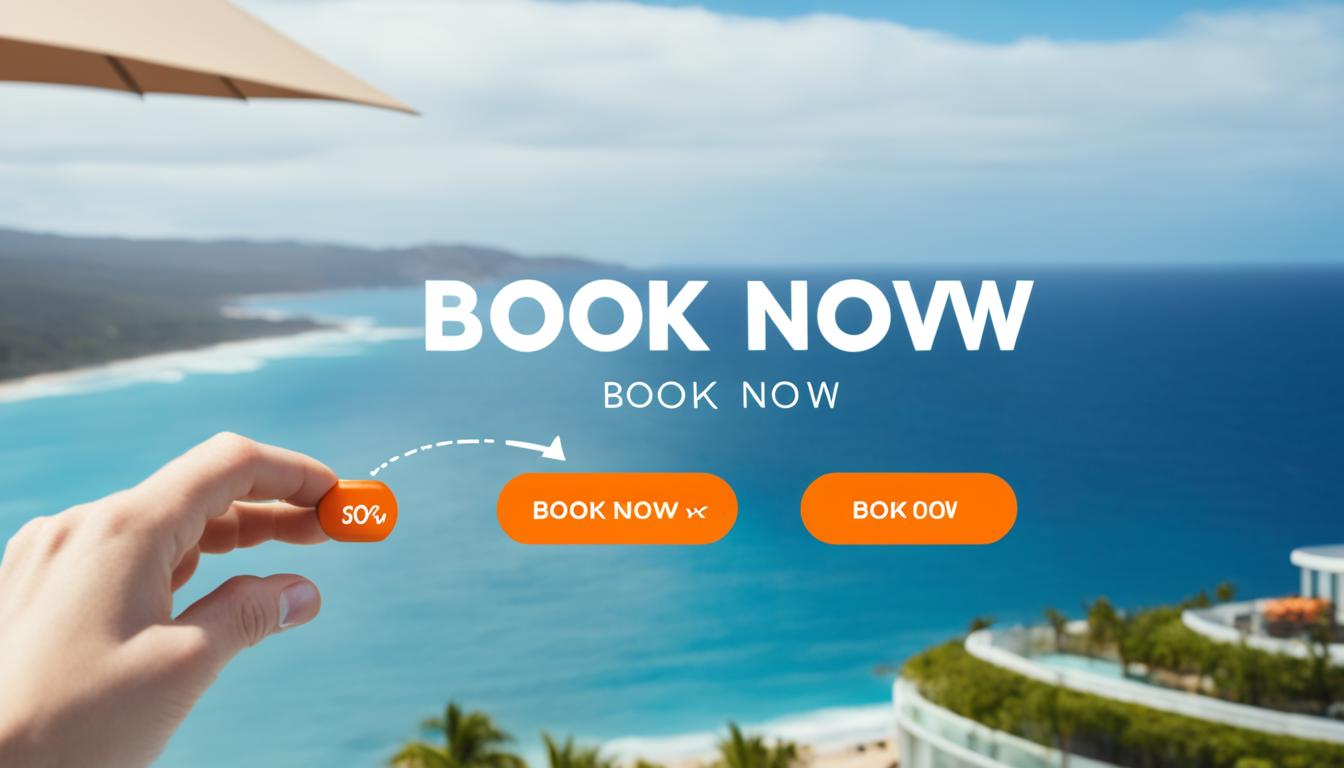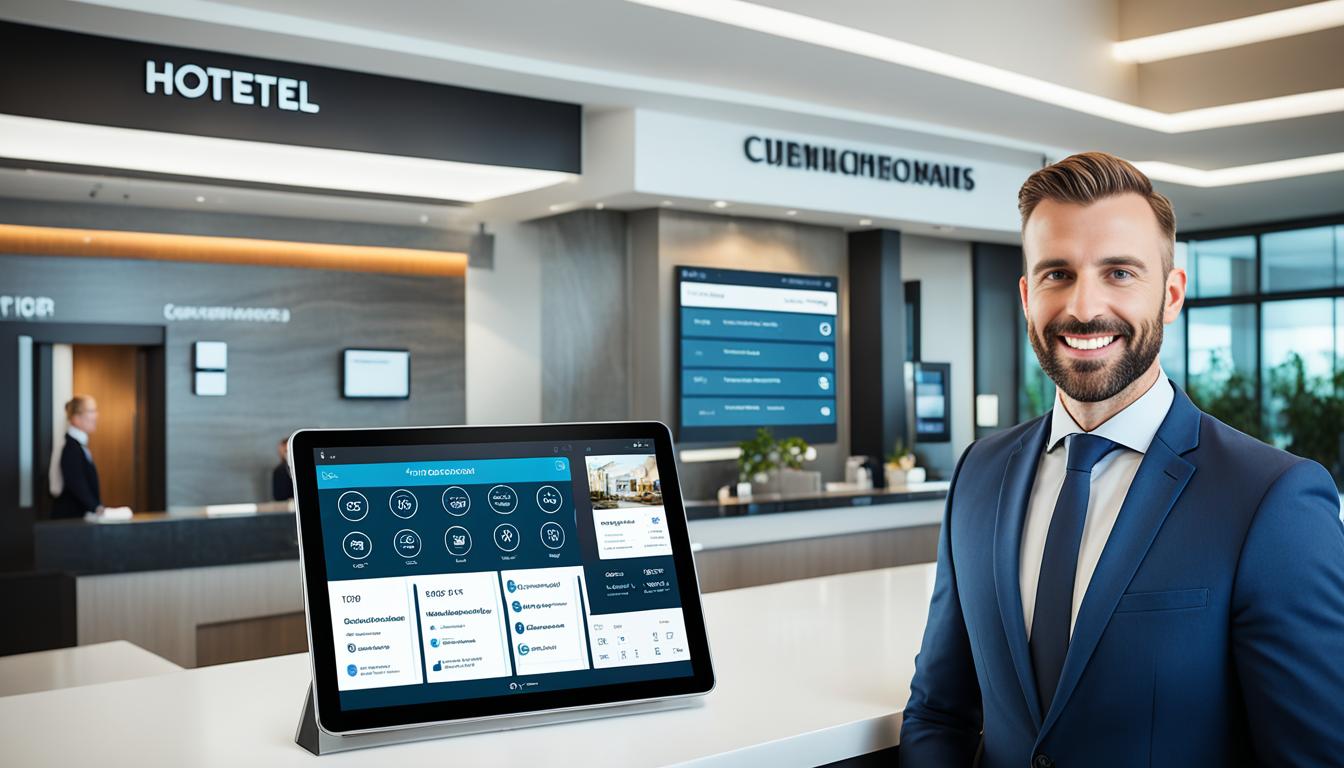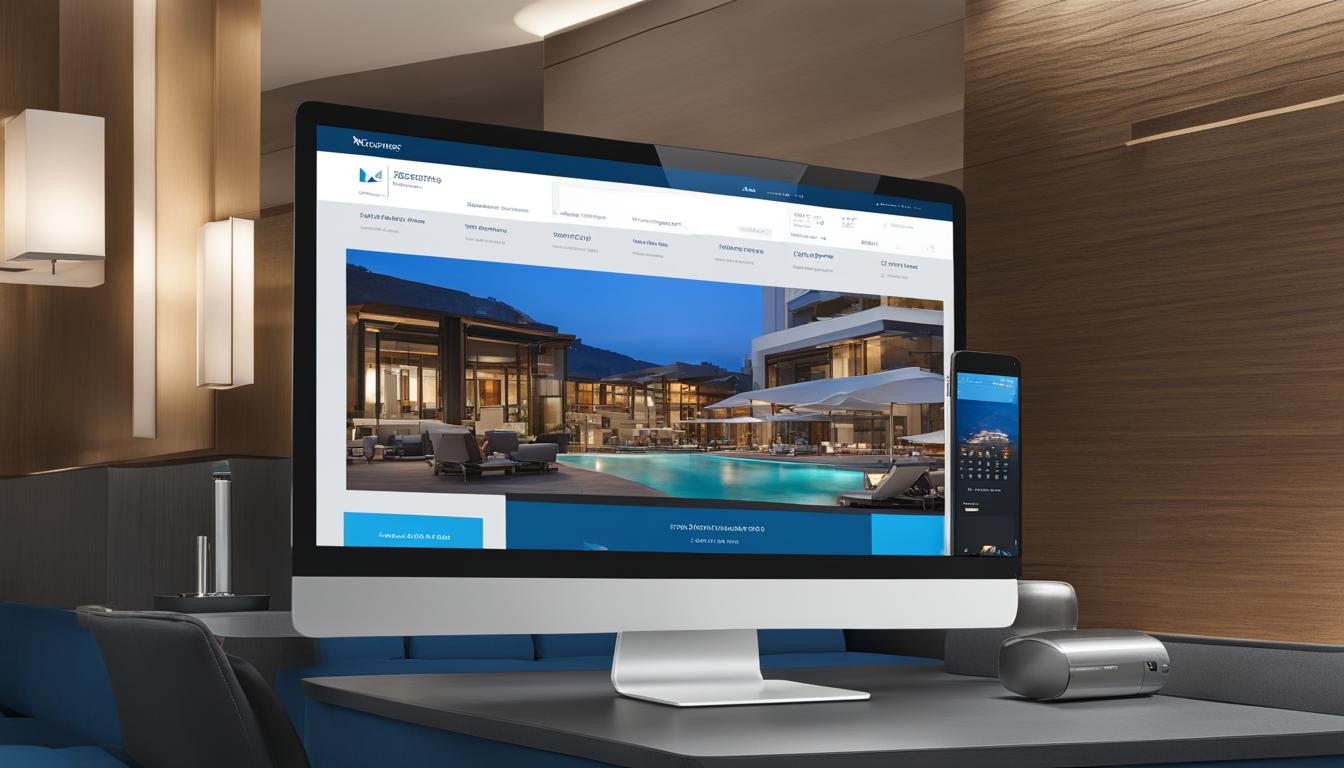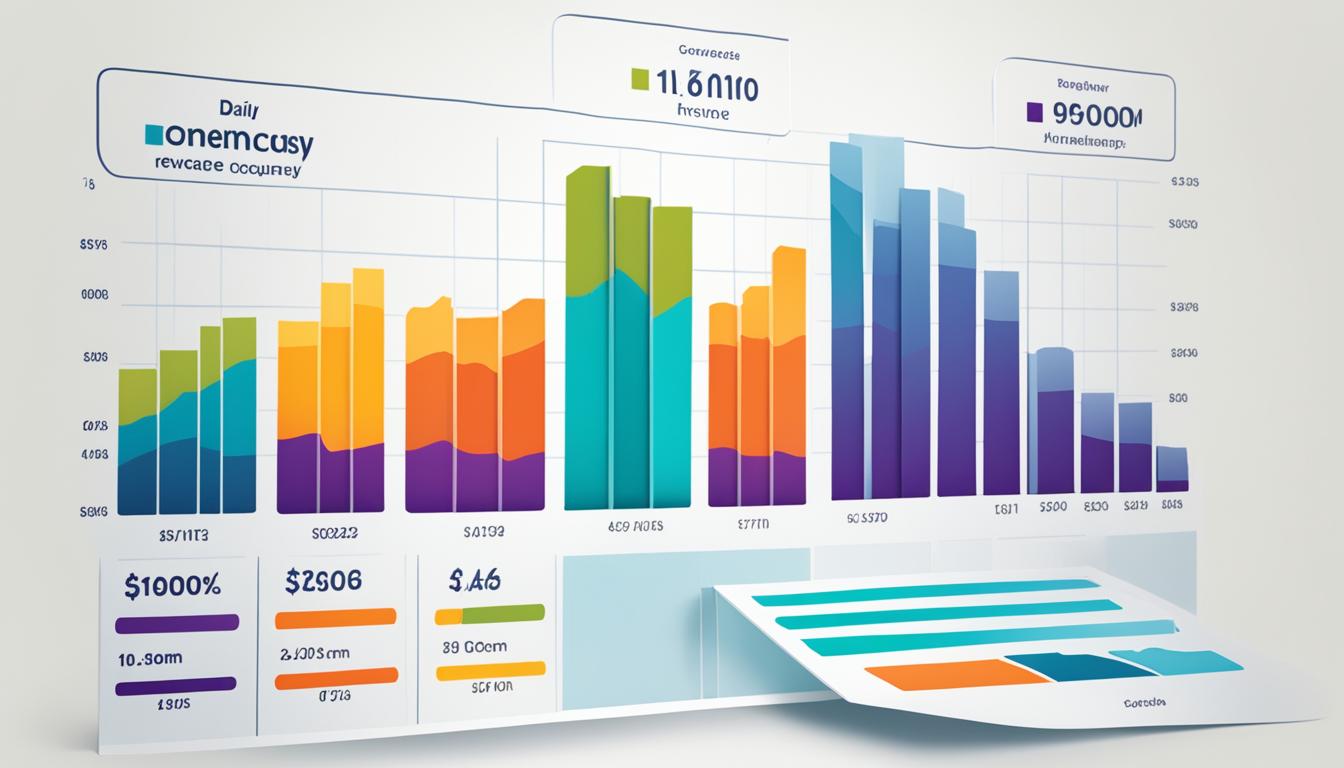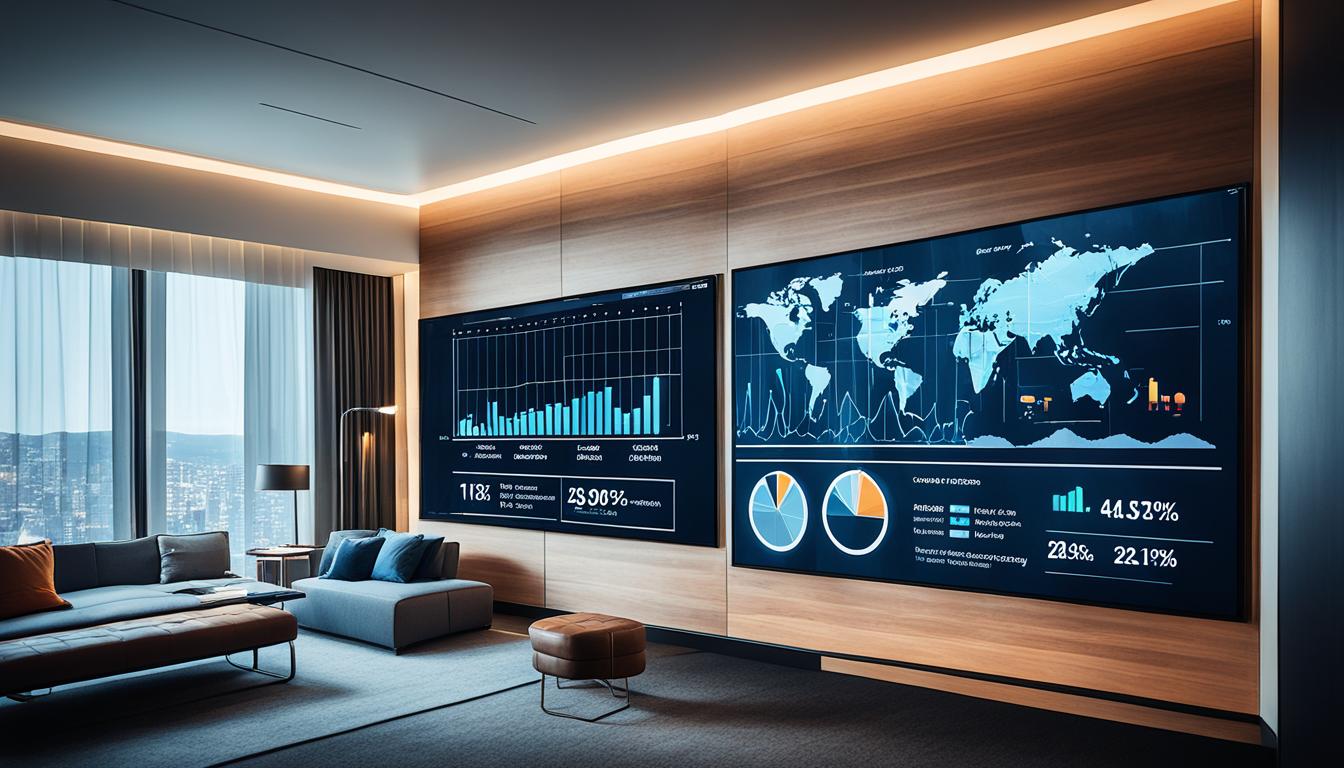Welcome to the first section of our article series on driving bookings with effective call-to-actions in hotel marketing. In this section, we will explore the importance of crafting compelling CTAs and strategies for maximizing conversion rates.
As a hotel, your ultimate goal is to attract guests and secure bookings. Effective call-to-actions play a crucial role in achieving this objective. A well-designed CTA can capture the attention of potential guests, create a sense of urgency, and encourage them to take immediate action, such as making a booking.
In the fiercely competitive hospitality industry, it’s essential to stand out from the crowd. By optimizing your CTAs, you can differentiate your hotel and enhance the user experience, ultimately driving more bookings and revenue.
In the sections to follow, we will delve deeper into the role of call-to-actions in hotel marketing, provide expert insights on crafting compelling CTAs, explore the power of emotional triggers, discuss mobile optimization, and present strategies for measuring and analyzing CTA success.
The Role of Call-to-Actions in Hotel Marketing
Call-to-actions (CTAs) play a vital role in hotel marketing, serving as powerful tools to capture the attention of potential guests and inspire them to take action. By strategically placing compelling CTAs throughout your marketing materials, website, and other promotional channels, you can effectively drive bookings and increase your hotel’s revenue.
CTAs serve as clear instructions that guide visitors towards the desired action, such as making a hotel reservation. They are designed to create a sense of urgency, communicate value, and provide an easy and seamless booking process for guests.
Whether it is through enticing phrases like “Book Now and Enjoy Exclusive Discounts!” or visually compelling buttons that stand out on your website, CTAs are meant to grab your target audience’s attention and prompt them to take the next step.
For example, a homepage banner with a CTA button that reads “Discover Your Dream Getaway” can inspire potential guests to explore your hotel’s offerings and ultimately lead to a booking. Similarly, a well-crafted email newsletter with a prominent CTA can entice recipients to click through and make a reservation.
Effective CTAs are concise, action-oriented, and visually appealing. They should clearly communicate the benefits and value of choosing your hotel and create a sense of urgency to encourage immediate action.
With a carefully planned hotel marketing strategy that includes compelling CTAs, you can optimize conversion rates and drive more bookings, ultimately boosting your hotel’s success in a competitive market.
Creating a High-Converting Hotel Website with PlanetHMS
If you’re looking to enhance your online presence and increase bookings, PlanetHMS is your go-to solution. As a leading hotel website builder software, they offer a range of services to help you create a high-converting website.
With PlanetHMS’s hotel website builder, you can effortlessly design a professional and visually appealing website. Their user-friendly interface allows you to customize your site to reflect your hotel’s unique brand and personality. Whether you’re a luxury resort or a boutique bed and breakfast, their intuitive platform ensures your website matches your style and creates a great first impression for potential guests.
But a great hotel website is more than just aesthetics. That’s where PlanetHMS’s hotel website marketing services come into play. They understand the importance of driving traffic to your site and converting those visitors into bookings. With their expertise, they can help you optimize your website’s content, improve search engine rankings, and implement effective online marketing strategies to attract more guests.
Moreover, PlanetHMS also offers hotel website SEO services to further boost your website’s visibility. Their team of SEO experts will work closely with you to optimize your site’s structure, meta tags, and keywords, ensuring your website shows up in relevant search results. By improving your search engine ranking, you’ll increase your chances of being discovered by potential guests and driving more direct bookings.
With PlanetHMS as your hotel website builder, you can enhance your online presence, attract more guests, and ultimately increase bookings. Don’t miss out on the opportunity to create a high-converting website that showcases the best of your property.
Crafting Compelling Call-to-Actions
When it comes to driving bookings for hotels, crafting compelling call-to-actions (CTAs) is crucial. CTAs are the gateway to converting potential guests into paying customers, and with the right strategy, they can make a significant impact on your hotel’s revenue.
To create compelling CTAs, there are a few key elements that you should focus on:
1. Simplicity and Clarity
Avoid overwhelming your website visitors with complex and confusing CTAs. Keep your CTAs simple and clear, using concise language that clearly conveys the desired action. For example, instead of “Click here to check availability,” use “Book Now” to make your CTA more straightforward and impactful.
2. Urgency and Exclusivity
Create a sense of urgency and exclusivity in your CTAs to encourage potential guests to take immediate action. Phrases like “Limited Time Offer” or “Exclusive Deal” can create a sense of FOMO (fear of missing out) and motivate visitors to make a booking decision quickly.
3. Benefit-Oriented Language
Highlight the benefits of booking with your hotel in your CTAs. Focus on what sets your property apart and why guests should choose to stay with you. Whether it’s exceptional amenities, convenient location, or outstanding customer service, communicate these unique selling points in your CTAs to entice potential guests.
4. Aesthetically Pleasing Design
Pay attention to the design of your CTAs. Make sure they stand out visually on your website, using contrasting colors, bold fonts, and prominent placement. The design of your CTAs should draw attention and guide visitors’ eyes towards the desired action.
By implementing these key elements into your CTAs, you can optimize their effectiveness and increase the likelihood of potential guests booking a room at your hotel. Now, let’s take a look at some examples of compelling CTAs in action.
Leveraging Emotional Triggers in Call-to-Actions
When it comes to driving bookings for your hotel, a powerful tool you can harness is emotional triggers in your call-to-actions (CTAs). Emotional triggers are psychological stimuli that evoke specific emotions and influence decision-making. By leveraging these triggers effectively, you can create a sense of urgency and excitement, compelling potential guests to make a booking.
One effective emotional trigger to include in your CTAs is scarcity. Highlighting limited availability or time-sensitive offers can create a sense of urgency, motivating guests to take immediate action. For example, you can use phrases like “Limited rooms available” or “Book now, offer ends soon” to instill a fear of missing out and drive conversions.
Another emotional trigger to consider is social proof. People are often influenced by the actions and opinions of others, so incorporating testimonials, reviews, or even displaying the number of bookings made, can help build trust and credibility. By showcasing positive experiences of previous guests, you tap into the desire for validation and reassure potential guests that they are making the right choice.
Additionally, appealing to the desire for exclusivity can be a powerful emotional trigger. Create exclusive deals or packages that are available only to a select group of guests, such as loyalty program members. This not only generates a feeling of exclusivity but also rewards loyal customers, encouraging repeat bookings.
To effectively leverage emotional triggers in your CTAs, it is important to understand your target audience and what resonates with them. Conduct market research, gather feedback, and monitor your analytics to identify which emotional triggers drive the most conversions for your hotel.
Remember, incorporating emotional triggers in your CTAs is not a one-size-fits-all approach. Experiment, iterate, and track the performance of your CTAs to continuously refine and optimize your hotel marketing strategy. By understanding and tapping into the emotions of your potential guests, you can create compelling CTAs that drive bookings and ultimately contribute to the success of your hotel.
Optimizing Call-to-Actions for Mobile Users
As the number of people booking hotels through their mobile devices continues to rise, it is imperative for hoteliers to prioritize optimizing their call-to-actions (CTAs) for mobile users. Mobile optimization ensures that potential guests have a seamless user experience when interacting with your website, ultimately leading to increased bookings.
When optimizing your CTAs for mobile users, there are several key aspects to consider:
Mobile-Friendly Design
Mobile users have specific preferences when it comes to user interface and design. It is crucial to create CTAs that are visually appealing, easy to read, and responsive across various mobile devices. By adopting a responsive design approach, your CTAs will automatically adjust to different screen sizes, enhancing the user experience for mobile users.
Clear and Concise Copy
Mobile users are often on the go and have limited time, so it’s essential to keep your CTA copy clear, concise, and action-oriented. Use persuasive language to convey the value and benefits of taking the desired action, such as “Book Now” or “Check Availability.” A strong and compelling CTA copy can significantly increase the likelihood of a mobile user making a booking.
Placement and Visibility
The placement and visibility of your CTAs play a critical role in their effectiveness. Position them prominently within your mobile website’s layout, ensuring they are easily noticeable without being obtrusive. Consider placing CTAs strategically near important information, such as room details or pricing, to capture the attention of mobile users at the right moment in their booking journey.
Optimizing your call-to-actions for mobile users is vital in today’s mobile-first world. By implementing mobile-friendly design, using clear and concise copy, and strategically placing your CTAs, you can create a seamless mobile experience that drives increased bookings for your hotel. Ensure that your online presence caters to the needs and preferences of mobile users to maximize conversion rates and stay ahead of the competition.
Measuring and Analyzing the Success of Call-to-Actions
In order to maximize the effectiveness of your call-to-actions and drive more bookings, it is essential to measure and analyze their success. By monitoring key metrics and utilizing the right tools, you can gain valuable insights into which CTAs are performing well and identify areas for improvement.
One important metric to track is the click-through rate (CTR). This indicates the percentage of users who click on your call-to-action compared to the total number of impressions. A high CTR suggests that your CTA is compelling and resonates with your audience. On the other hand, a low CTR may indicate that your CTA needs to be more enticing or prominent on your website.
Another metric to consider is the conversion rate. This measures the percentage of users who complete a desired action, such as making a booking, after interacting with your call-to-action. A high conversion rate indicates that your CTA is successfully driving bookings, while a low conversion rate may indicate a need to refine your CTA or improve your booking process.
Utilizing tools such as Google Analytics can provide valuable data on user behavior, helping you understand how users interact with your CTAs and where they drop off in the booking process. By analyzing this data, you can identify potential bottlenecks and make data-driven decisions to optimize your CTAs and increase conversions.
Another aspect to consider is A/B testing. By creating two or more versions of your call-to-action and analyzing the performance of each, you can determine which variation resonates better with your audience. This allows you to fine-tune your CTAs and design more effective strategies for driving bookings.
Remember, measuring and analyzing the success of your call-to-actions is an ongoing process. Regularly monitoring and optimizing your CTAs based on data insights can help you continuously improve your hotel marketing strategy and achieve higher booking conversions.
Conclusion
In conclusion, effective call-to-actions play a crucial role in driving bookings for hotels. By carefully crafting compelling CTAs, hotel marketers can capture the attention of potential guests and motivate them to take action. Whether it’s a simple “Book Now” button on a website or a personalized offer via email, a well-designed and strategically placed call-to-action can make a significant impact on conversion rates.
It’s essential to optimize call-to-actions for mobile users, considering the growing number of bookings made through mobile devices. Ensuring a seamless user experience on mobile platforms can greatly improve the chances of conversion. Remember to create mobile-friendly CTAs that are easy to tap and navigate.
Additionally, tracking and analyzing the success of your call-to-actions is vital for continuous improvement. By monitoring key metrics such as click-through rates, conversion rates, and bounce rates, hotel marketers can identify areas of improvement and make data-driven decisions to enhance their marketing strategy. Utilizing tools and software for measurement and analysis can provide valuable insights into the effectiveness of your call-to-actions.
In summary, crafting compelling call-to-actions, optimizing them for mobile users, and continually measuring their success are essential components of a successful hotel marketing strategy. By implementing these strategies, hotels can drive more bookings, increase revenue, and ultimately enhance their overall marketing performance.

